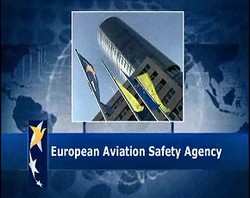Wed, Mar 06, 2013
Pushing For A Redefinition Of 'Commercial' Aviation In Europe
IAOPA has responded to European moves towards a general aviation safety strategy with a series of suggestions aimed at improving EASA regulation of GA and reducing unnecessary burdens on the industry. The Association is continuing its push for a redefinition of ‘commercial’ aviation which moves away from the all-encompassing EASA notion that virtually anything where money changes hands is commercial – including cost-sharing by private pilots, business-related flights, and group ownership of aircraft. It also believes that such pursuits as air racing and charity flights should not be considered commercial.

IAOPA also wants EASA to accelerate work on Phase 2 of the reconsideration of the Part M maintenance requirements to relieve some of the cost and bureaucracy burdens that have been improves with no improvement in safety. Some of the mistakes made with Part M are being repeated with EASA’s moves towards creating Approved Training Organisations, which face greatly increased bureaucratic requirements and costs with no apparent safety goal. IAOPA says many small flight training organisations will be unable to cope with the additional administration requirements and wants costly and burdensome changes to be revisited before they are forced on the industry. There are also concerns over instructor and examiner requirements
IAOPA is also seeking to simplify the Agency’s stance on GPS approaches at GA fields, reconsider inflexible laws on oxygen installation, and step back from its determination to kill of the UK’s Instrument Meteorological Conditions rating, allowing it at least to continue in the UK, where it has saved many lives in its 40 years of operation.

It seeks an interpretation of the ICAO language proficiency requirements to restrict them to airspace and aerodromes where an air traffic control service is required and a change to medical requirements to exclude fewer private pilots unnecessarily from the industry. Third country registration issues, it says, should be dealt with through a validation system, and STCs from ICAO-contracting states should be acceptable to all. There should be no need for EASA to approve minor modification.
In conclusion, IAOPA says the EASA requirement to achieve “a high, uniform level of safety” is too amorphous, and in suggesting that safety levels for airliners should be identical to those for paragliders or small helicopters it places too great a burden on GA. The Basic Regulation governing EASA’s work should be modified to reflect this.
IAOPA’s full submission will be made available when it is finalized.
More News
Decision Altitude (DA) A specified altitude (mean sea level (MSL)) on an instrument approach procedure (ILS, GLS, vertically guided RNAV) at which the pilot must decide whether to >[...]
Aero Linx: T-34 Association, Inc. The T-34 Association was formed in July 1975 so that individuals purchasing then military surplus T-34As had an organization which would provide s>[...]
As He Released The Brakes To Begin Taxiing, The Brake Pedals Went To The Floor With No Braking Action Analysis: The pilot reported that during engine start up, he applied the brake>[...]
“Legislation like the Mental Health in Aviation Act is still imperative to hold the FAA accountable for the changes they clearly acknowledge need to be made... We cannot wait>[...]
Also: IAE Acquires Diamond Trainers, Army Drones, FedEx Pilots Warning, DA62 MPP To Dresden Tech Uni The danger to the flight training industry and our future pilots is clear. Dona>[...]
 ANN's Daily Aero-Term (12.08.25): Decision Altitude (DA)
ANN's Daily Aero-Term (12.08.25): Decision Altitude (DA) ANN's Daily Aero-Linx (12.08.25)
ANN's Daily Aero-Linx (12.08.25) NTSB Final Report: Piper PA-31T3
NTSB Final Report: Piper PA-31T3 Aero-News: Quote of the Day (12.08.25)
Aero-News: Quote of the Day (12.08.25) Airborne-Flight Training 12.04.25: Ldg Fee Danger, Av Mental Health, PC-7 MKX
Airborne-Flight Training 12.04.25: Ldg Fee Danger, Av Mental Health, PC-7 MKX




